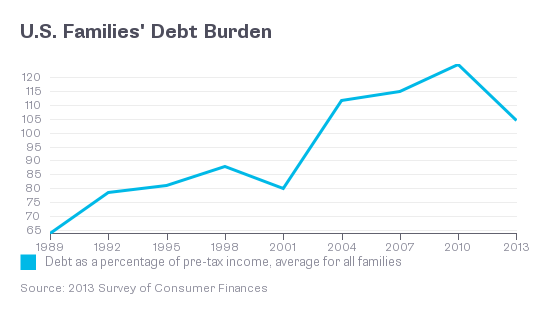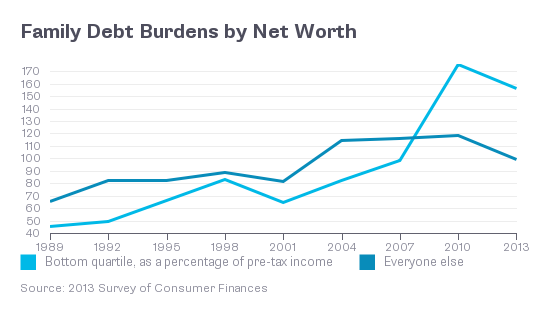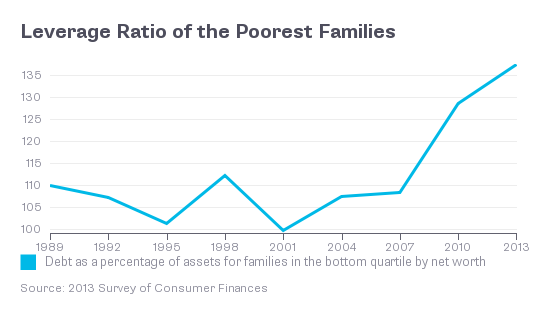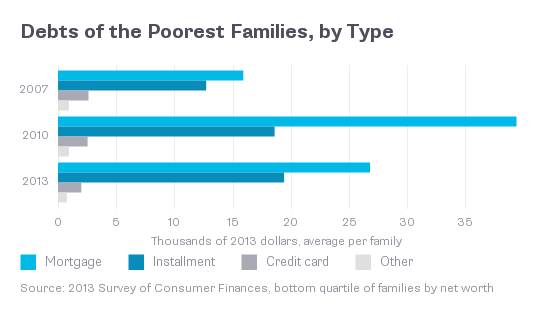
U.S. Families' Debt Burden
U.S. consumers have made a lot of progress in paring down the extreme debt loads that helped make the 2008 financial crisis such an epochal disaster. Fresh data from the Federal Reserve, though, offer an important caveat: Millions of the poorest families are still very deep in the hole -- and might be getting deeper.
The triennial Survey of Consumer Finances, released by the Fed last week, confirms an overall improvement in the state of U.S. household finances. The average debt burden for all families stood at about 105 percent of pretax income in 2013, down from about 125 percent in 2010 and the lowest level since the 2001 survey.
The improved finances, along with more recent signs that consumers are feeling comfortable about borrowing again, has given some economists cause for optimism: The more progress households make in getting out from under their debts, the logic goes, the greater the chances that renewed spending will boost growth.
A closer look at the Fed data, however, suggests that the
financial improvement is far from evenly distributed. The least wealthy families have made the least progress, and by some measures are in worse shape than ever.As of 2013, the debts of the quarter of families with the lowest net worth stood at about 156 percent of pretax income, according to the Fed data. That's more than in 2007, before the financial crisis hit. It's also more than any of the wealthier groups -- something that hadn't happened before 2010.

© Family Debt Burdens by Net Worth
The poorest quartile of families is the only group that owes more than it owns. Thanks to declines in the value of assets, the group's average leverage ratio -- debt as a percent of assets -- increased to 137.5 percent in 2013, the highest on record since the survey started in 1989.

Leverage Ratio of the Poorest Families
There are various possible explanations for the poorest families' financial predicament.
Incomes have declined, making debt burdens look worse. Some previously wealthier people probably migrated into the group as the value of their homes fell below what they owed on mortgages. More ominous is a
steady increase in installment debt, a category that includes both student and auto loans -- areas that have recently seen a lot of questionable lending to lower-income borrowers.

Debts of the Poorest Families, by Type
Whatever the drivers, the data suggest that the 2008 crisis and subsequent economic malaise have left a troubling legacy:
A group of the poorest families, numbering roughly 14 million, whose precarious finances make them vulnerable to shocks and limit their ability to contribute to future growth. That's hardly a strong foundation for a healthy recovery.
The truth is, credit is for suckers. There's nothing on this earth that anyone needs right now that can't be saved for. It took me 40 years and two bankruptcies to learn this lesson. My grandparents died debt free, never had credit cards or a mortgage because they saved for everything they own.